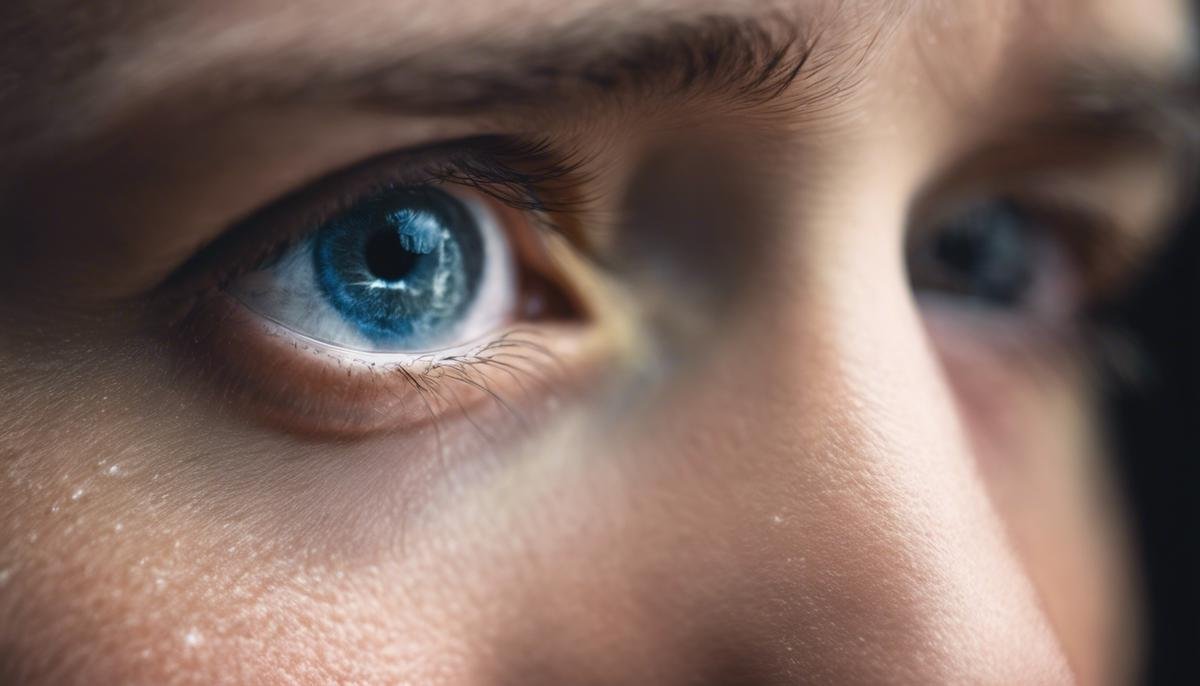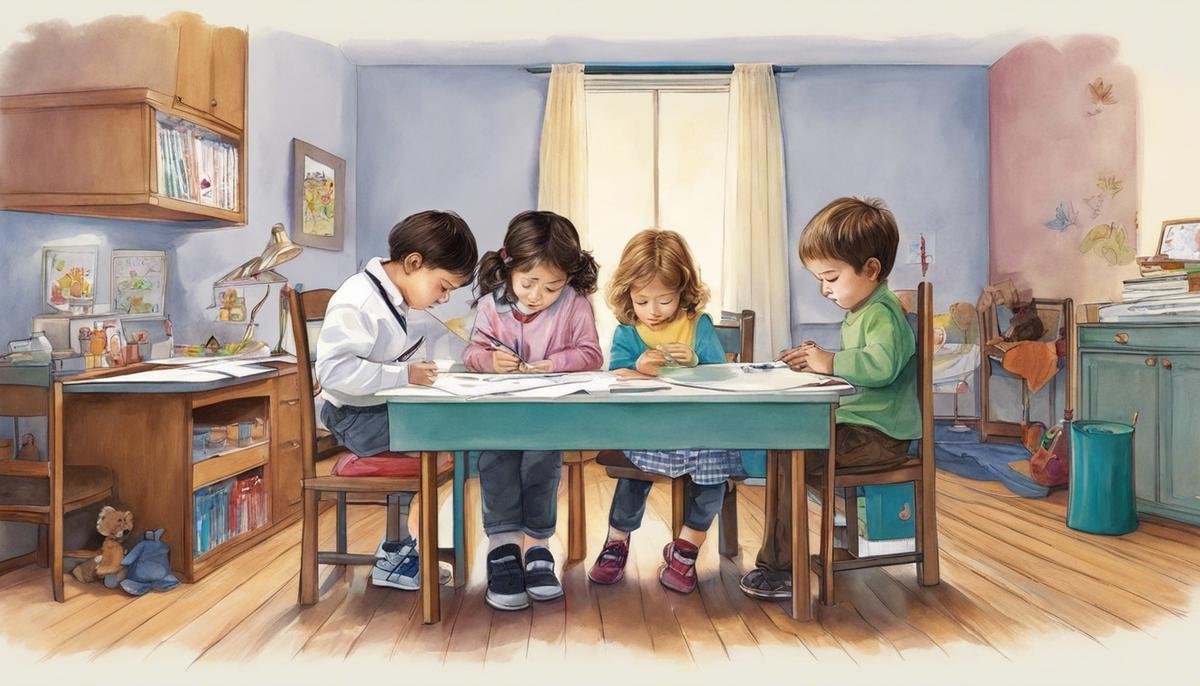
The intricate tapestry of human experience is painted with an array of senses, guiding us through the nuanced perceptions of the world around us. For some, however, certain threads in this tapestry can be elusive or missing entirely—as is the case with anosmia, the absence of one’s sense of smell, a particularly curious phenomenon when it intersects with autism spectrum disorder (ASD). With autism being a complex neurodevelopmental condition marked by diverse sensory experiences, the co-occurrence of anosmia introduces unique challenges that merit a deeper understanding. Embarking on a journey through the lens of both science and lived experience, we aim to shed light on the mysterious relationship between autism and anosmia, unraveling how this duo shapes the contours of daily life and the spectrum of human diversity.
Understanding Anosmia in Autism
Anosmia and Autism: Understanding the Connection
Have you ever heard of anosmia? It’s one of those terms that might not be part of the everyday parenting lexicon, but it’s worth talking about, especially when it comes to understanding our little ones on the autism spectrum. Anosmia is the medical term for the loss of the sense of smell, and though it might seem like a small thing in the grand tapestry of challenges a child with autism might face, it’s actually quite significant.
First things first, anosmia itself is a condition that can arise from a variety of causes. From a pesky cold to more chronic conditions like nasal polyps or even neurological damage, the reasons behind anosmia can be as varied as the scents that it prevents one from experiencing. Some people are born with it — a condition known as congenital anosmia — and never know the scent of fresh-cut grass or the aroma of a home-cooked meal.
But how does this all relate to autism? For starters, sensory issues are pretty common in the autism community. These can include hypersensitivity or hyposensitivity to light, sound, and yes – smells. Imagine the everyday world, but with all sensory dials turned up to 11, or conversely, dialed down to barely a whisper. That’s what it might feel like for some individuals with autism. It can be overwhelming or disorienting and can affect everything from food preferences to social interactions.
In some cases, kids with autism might have difficulties in processing sensory information accurately. This can mean that even if they have a functioning sense of smell, the way they interpret scents could be different from what one might expect. They might not recognize certain smells or might find certain odors that others barely notice to be extremely bothersome. In this context, having anosmia or a reduced sense of smell could, paradoxically, sometimes be a relief.
It’s also worth noting that the sense of smell is tied to taste, which can greatly affect eating habits. Many parents find that their kids on the spectrum have very particular dietary preferences or aversions, and anosmia can play a role in this. Without the ability to smell, the range of flavors they experience is limited, which can make certain textures or temperatures of foods more important or noticeable.
Moreover, anosmia in individuals with autism can be a safety concern. Smell is a key sense that can alert us to dangers like smoke from a fire or a gas leak. If this sentinel sense is missing or if the individual cannot communicate or process the danger sign, it creates a unique challenge that requires awareness and strategic planning to ensure safety.
Understanding the interplay between anosmia and autism is key in tailoring support and creating a nurturing environment that considers these sensory complexities. In embracing our children’s sensory experiences with empathy and knowledge, we inch ever closer to giving them a world they can navigate more comfortably. Whether that leads us to finding new ways to enhance their environment, educate those around them, or advocate for their needs, it’s a journey well worth taking. After all, being in tune with our kids isn’t just about understanding how they perceive the world — it’s also about reshaping our own perceptions in the process.

Impact of Anosmia on Daily Life
Navigating Through Anosmia: Adjusting Daily Life for Autistic Loved Ones
Anosmia, the loss or impairment of the sense of smell, isn’t just about missing out on fragrant roses or freshly baked cookies. For individuals with autism, this sensory change can ripple through their daily lives in unexpected ways. Adapting family routines and environments becomes crucial for those within the autism community who also experience anosmia.
When anosmia intertwines with autism, communication hurdles can emerge. Smell often influences social interactions, a fact that may not spring to mind immediately. Without the ability to sense and decode scents, autistic individuals might find it challenging to bond or relate to others in social settings, especially when scent is a shared experience – whether it’s sniffing the salty beach air or recoiling from a whiff of spoiled milk. Encouragement and guidance in developing other sensory cues for communication can bolster interactions and reduce potential frustrations.
Hygiene practices also tend to be affected when one cannot detect bodily or environmental odors. Crafting visual or scheduled reminders for personal care can provide supportive scaffolding for those who struggle with smell-related self-awareness. Additionally, education on the importance of cleanliness, not for the scent but for health and wellness, reinforces good habits outside the context of smell.
Participation in activities that typically involve the sense of smell may require some creative tweaking. A switch to more tactile or visual experiences allows for inclusive enjoyment. For instance, instead of a traditional garden, one might consider a texture-driven setup where plants are chosen for their varied leaves rather than their blooms, ensuring the sensory garden remains an accessible haven.
Lastly, recognizing emotional responses to the absence of smell is paramount. Acknowledging feelings of confusion or isolation that may arise and providing a space for emotional expression helps in validating their experiences. In some cases, it may even be beneficial to consult with therapists or specialists who can offer coping strategies tailored to the complexities of anosmia in the context of autism.
By understanding and adjusting to the nuances of anosmia, families and communities can continue to ensure that individuals with autism experience a life rich in variety, nurture, and care, even in a scentless world.

Diagnosing Anosmia in Children with Autism
Delving a bit deeper, professionals use several strategies to identify anosmia in children on the autism spectrum. Given the unique challenges that children on the spectrum may face when communicating their experiences, a keen observation from caregivers, teachers, and health professionals is vital.
Firstly, clinicians might employ standardized smell identification tests. These tests consist of various scent samples, and the child is asked to identify the smells from multiple-choice options. While effective in theory, these tests can be challenging for children with communication difficulties. Therefore, these assessments are often paired with behavioral observation to glean a more accurate picture of a child’s olfactory functioning.
Behavioral observation is essential, as some children may not have the language skills to express their inability to smell. Caregivers and professionals often look for indirect signs, such as a lack of reaction to strong odors or not being able to identify foods by their smell. Furthermore, they may notice that the child doesn’t show preferences for foods based on their scent or avoids certain foods due to their texture, rather than their aroma.
A doctor or specialist may also review a child’s medical history for incidents that could have affected the sense of smell, such as head injuries or infections. In addition, a physical exam can rule out any obstructions in the nasal passages that could be impacting the sense of smell.
It’s also crucial for professionals to differentiate between anosmia and related conditions like hyposmia (reduced sense of smell) or ageusia (loss of taste), which can sometimes accompany or be confused for anosmia. They accomplish this through detailed history-taking and specific diagnostic tools that measure the degree of smell loss.
Finally, in partnership with caregivers, professionals can establish protocols for regularly monitoring a child’s response to smells at home. This might include introducing new scents in a controlled setting and observing the child’s reactions or lack thereof. These real-world observations are shared with clinicians to contribute to a comprehensive assessment.
Identifying anosmia in children with autism is a gentle balance between scientific assessment and compassionate observation. By building a complete picture of a child’s sensory profile, professionals can help tailor supports that enhance well-being and life experiences for these children—embracing the full spectrum of what makes each child unique and capable.

Support and Resources for Families
Navigating the world of parenthood comes with its joys and challenges, especially when ensuring a nurturing environment for those with additional needs, such as children with autism experiencing anosmia. Once families have a clear understanding of anosmia’s impacts and what to be mindful of, finding the right support and resources is the next crucial step.
When seeking outside support, often the first port of call is connecting with healthcare professionals knowledgeable about autism and sensory processing disorders. Pediatricians, neurologists, and specially-trained occupational therapists can provide guidance on coping methods and therapeutic strategies that fit into daily routines.
Another essential resource is local and online support groups. These communities provide a sense of belonging and a wealth of shared experiences. Families can discover others dealing with similar challenges and exchange personal insights, which often include creative solutions and local professional recommendations.
School systems also play a vital role in support. Educators and school staff can be key allies in ensuring that their environment caters to the needs of students with anosmia and autism. Individualized Education Plans (IEPs) can include accommodations to ensure that these students have a safe and supportive learning environment that addresses their sensory challenges.
Various organizations and websites dedicated to autism research and support are treasure troves of information. They often share the latest studies, tips for everyday living, and can point families toward grants or financial aid for therapies or equipment that might help in managing anosmia.
Furthermore, look into professionals who specialize in Assistive Technology (AT). AT services can recommend tools and devices that aid children with autism and anosmia in navigating their worlds, enhancing communication, and fostering independence.
Lastly, it’s essential not to overlook the power of family and friends. Loved ones can offer not just emotional support but also help in reinforcing the strategies and accommodations devised by professionals in the child’s life.
Remember, every family’s journey is unique, and so, exploring multiple avenues for support and resources will be key in offering the best care and assistance to children with autism and anosmia. Just like crafting a family recipe to perfection, finding the right blend of support takes time, adjustment, and lots of love. Keep the conversation going, engage with specialists and community members, and continue advocating for the needs and well-being of every family member.

Advancements in Research on Anosmia and Autism
Navigating the Horizon: Innovations in Anosmia Treatment and Autism
As our understanding of autism spectrum disorder (ASD) grows, so does our appreciation for the diverse experiences of those living with it. Anosmia, or the loss of smell, is one sensory challenge that can profoundly affect individuals with autism. While the first part of this article dove into the realities of anosmia in the autism community, let’s now turn our focus to the promising advances and potential treatments that current research is bringing to light.
At the crossroads of technology and therapy, researchers are trying new strategies to awaken the dormant senses. Olfactory training, which has shown some promise in the general population, is being adapted to suit the varied needs of those with autism. This process involves repeated and structured exposure to a range of scents to potentially stimulate the olfactory system. Although olfactory training’s efficacy for autism-related anosmia is still under study, it stands as a beacon of hope for many.
Another avenue being explored is the field of gene therapy. Genetic links to anosmia have sparked interest in treating the condition at the molecular level. Though still in early stages, the idea is to repair or replace the genes responsible for olfactory function. While this might seem like something out of science fiction, gene therapy’s trajectory hints at a future where anosmia could be addressed at its root cause.
Advances in assistive technologies also provide a glimmer of optimism. Devices that can simulate sensory experiences or provide cues to replace the missing sense of smell are becoming more sophisticated. For instance, wearables that detect and notify individuals of certain scents can compensate for anosmia in critical situations, such as detecting smoke or spoiled food. Meanwhile, mobile apps designed for sensory processing challenges can offer personalized support and strategies for managing daily routines.
Furthermore, an integrated approach combining occupational therapy, nutritional guidance, and life skills coaching is gaining traction. This approach recognizes that treating anosmia, particularly in the context of autism, is not a one-size-fits-all quest. Therefore, customized plans that address the unique patterns of sensory processing in each individual are critical.
Research also underscores the importance of a multidisciplinary team to manage the broader implications of anosmia in autism. This includes the collaboration of neurologists, psychologists, occupational therapists, and even culinary experts to help address the impact on taste and diet, which is a major concern for overall health.
Lastly, the support of the community remains an invaluable component. Shared stories and collective wisdom, often found in support groups and forums, not only provide comfort but can also be a treasure trove of practical advice and tips for navigating day-to-day challenges.
In summary, the emerging research on anosmia treatment in autism heralds an era of personalized and comprehensive care. It encourages caregivers and health professionals to be adaptive, innovative, and holistic in their approaches. With a commitment to research and a community united in support, the future of anosmia treatment in autism looks hopeful, ready to enhance the quality of life and empowerment for those affected.

As the landscape of autism research continually expands, so does our comprehension of the multifaceted nature of sensory differences, including the perplexing condition of anosmia. The kaleidoscope of implications that arises from this convergence of senses—or lack thereof—compels us to forge ahead with empathy and dedication. Each stride in research and support we regarding anosmia in autism beckons us closer to a future where subtleties of perception are not only acknowledged but embraced. As we venture forth, let us carry with us the insights gained and the stories of resilience, coloring our approach to difference with compassion and informed awareness, empowering those at the heart of this journey to navigate their world with confidence and support.




